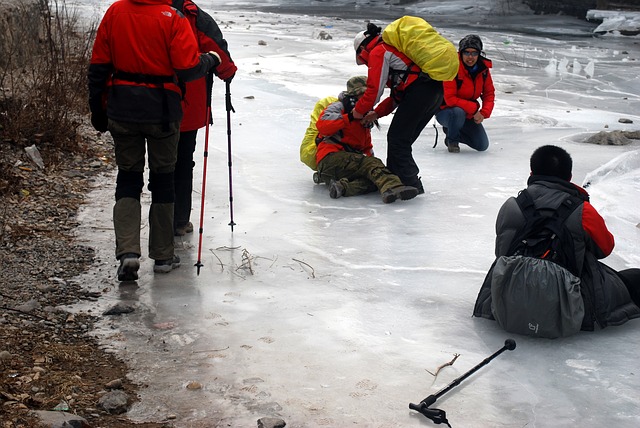Does Your Knee Hurt After A Fall?
With the recent snow storm in Philadelphia the sidewalks have been slippery and many people will experience a slip and fall. A number of injuries can occur after a fall including knee pain after the knee connects to the pavement. Pain, swelling, and a decrease in activity are all common after a fall resulting in knee pain. After your fall you may not know what to do.
Keep reading to find out what is next.
Do You Need An X-ray?
When it comes to safety we want to rule out the serious things. The Ottawa Knee Rules help rule out those who do not need an x-ray. Just because you have any of these traits does does not mean you have a broken bone but it is important to be seen at the ER or your physician to get an x-ray. If you have any of the characteristics below you should be seen to determine if you need an x-ray.
- Over 55 years old
- Only tender over the patella (the bone in the front of your knee) and no other areas tender
- Tender over the bone on the outside of your leg right below your knee (the fibular head)
- Unable to bend knee past 90 degrees
- Unable to put weight both immediately and after the fall for 4 steps (it is okay to limp)
What About An MRI
It is unlikely you will need an MRI right away. This does depend on your physical presentation however and a physical therapist can help determine if you need an MRI. An MRI helps determine if you are a candidate for surgery. Even people with an ACL tear do not need surgery. 60% of people who do not have immediate surgery do just as well as those who have surgery. Also an MRI can show things that were already in the knee prior to the fall and your pain. This could lead to unnecessary surgery.
If You Do Not Need An Image
When it comes to an acute injury. You should start with PRICE. This is an easy acronym to remember what to do immediately after injury and the next few days.
- (P)rotect the area. This means you stay off the knee. This can mean crutches if you are unable to take a few days to take it easy. Braces can be a nice reminder but do not help much to protect the knee.
- (R)est if you notice swelling or you have pain that lingers when you stay active.
- (I)ce the area. Ice is great to help with both pain and inflammation. Although ice can cause the fall and result in pain it will be your friend after.
- (C)ompress the area. This can be from a wrap or a sleeve that does not have a hole for the knee cap. This is because you do not want the swelling to just move to the front of the knee. Compress the entire area but if you use a wrap make sure below the knee is not losing circulation and changing color or in pain.
- (E)levate the knee above the height of your heart to help reduce swelling. Controlling swelling is important to reduce pain and help the healing process.
The Last Step
Some people bounce back quickly but if you have some level of pain or are unable to return fully to your usual activities it is time to seek further assistance. Physical therapy is key for a majority of people after a slip and fall knee injury. PT will help you reduce your pain, recover your strength, and help you get back to the things you love faster and with less pain. If you find yourself with lingering knee pain a week after a fall take advantage of your initial session to determine what the next step for your recovery needs to be.

